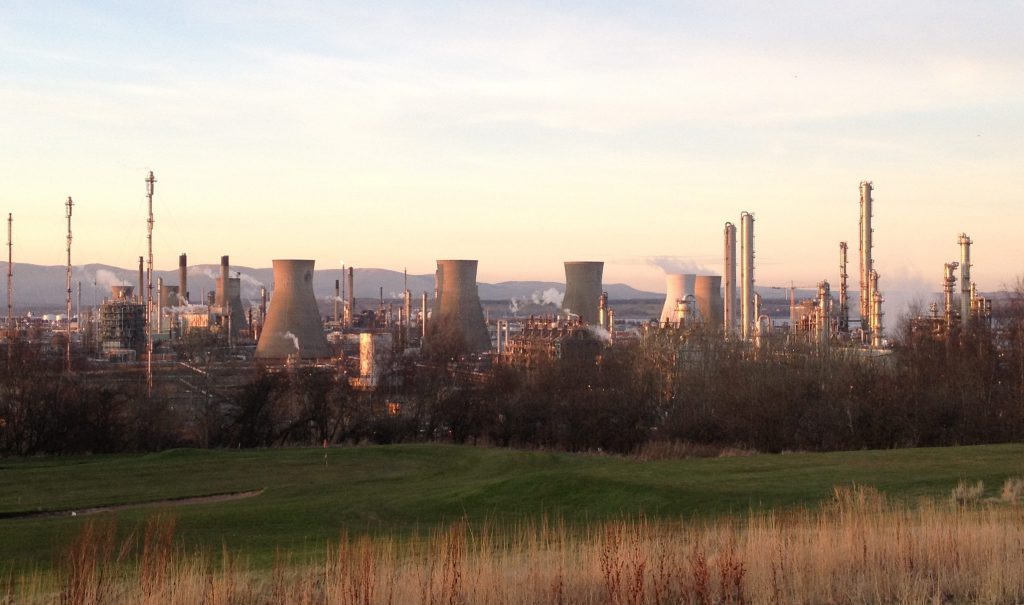
How fracking in America makes Scotland the home of plastic production
Plastic is all around us. It’s in our homes, the air we breathe, the water we drink and the food we eat. And now it’s even been discovered at the bottom of the deepest ocean and falling in the snow in the Arctic.
In 2018, global plastic production almost reached 360 million tonnes, with 62 million tonnes being produced in Europe. But where does all this plastic we’re consuming actually come from?
Fracking for plastic

The majority of plastic on the market right now is derived from fossil fuels. Scotland is the home of plastic production, with Ineos, the largest producer of plastic in the UK situated in Grangemouth. Ineos imports ethane from American shale fields to Scotland which is turned into ethylene to make billions of plastic pellets. These pellets are then used by manufacturers to make anything from plastic bags to food packaging and toys.
We must remember that while the Scottish Government has effectively banned fracking in Scotland, it still allows Ineos to import fracked gas into the country. Whereas Ireland has taken a significant step forward in the fight against fossil fuels by including a ban on the import of fracked gas from America and the Middle East to a proposed new LNG terminal in this year’s Programme for Government.
The transatlantic pipeline
Having taken advantage of the shale gas boom in America, Ineos went onto build its own infrastructure to import fracked ethane gas from sites in Pennsylvania and Texas to plants in Grangemouth and Rafnes in Norway.
The first shipment of fracked gas arrived in Scotland in 2016 across the virtual transatlantic pipeline created by Ineos which allows huge ships to bring 800,000 tonnes of ethene to Europe each year. But before the gas can leave America, it needs to get from its fracking site to the coastline at one of the ports. In order to do this, the 300 mile Mariner East 1 pipeline carries it from the Marcellus Shale region through Pennsylvania.
In 2018, the pipeline was shut down for a short period of time due to sinkholes appearing and worries that a potential leak could cause “catastrophic results impacting the public”. While those who live on this side of the pipeline in Grangemouth have to endure air pollution, flaring, smoke, noise and even bad smells coming from the Ineos plant, not to mention all the millions of tonnes of greenhouse gases which are being released into the atmosphere.
Environmental impact of plastic production
Plastic pollutes at every stage of its lifecycle from the oil and gas extraction to the plastic straws that end up choking our marine life. While we often focus on the pollution caused by the end product, it’s worth noting that plastic is polluting from the minute fossil fuels are extracted from the earth.
Since most plastics that are derived from fossil fuels, plastic production is a major contributor to climate change. The more plastic we make, the more petrochemicals we need and hence the more greenhouse gases which are pumped into our atmosphere.
In 2050, the production and incineration of plastic is expected to add more than 2.8 billion metric of tons of greenhouse gases to the atmosphere. That’s the equivalent to emissions from 615 five-hundred-megawatt coal power plants.
Plastic nurdles also pose a big threat to our environment, in particular our marine environment. These lentil-sized plastic pellets, which are made at sites like Ineos to be turned into plastic products, often make their way onto beaches and into rivers near the sites. They act as sponges, soaking up toxins in their environment, and are easily mistaken for food by marine animals and seabirds.
In 2018, a staggering 450,000 plastic pellets were found on a beach in North Queensferry just 12 miles from Ineos, despite the plant having a Zero Pellet Loss Programme.
The future of plastic
So what is next for the future of plastic? What is clear is that we cannot continue to produce plastic at the rate we currently do. And with plastic production expected to grow even more in the future, we need to take urgent action now.
The best thing we can do is to reduce the plastic we are consuming and move to a circular economy where there are high rates of recycling and reuse. We must not fall into the trap of rushing to replace fossil fuel based plastic with bioplastics. Read more about why bioplastics are not as environmentally friendly as they are marketed in my blog here.
